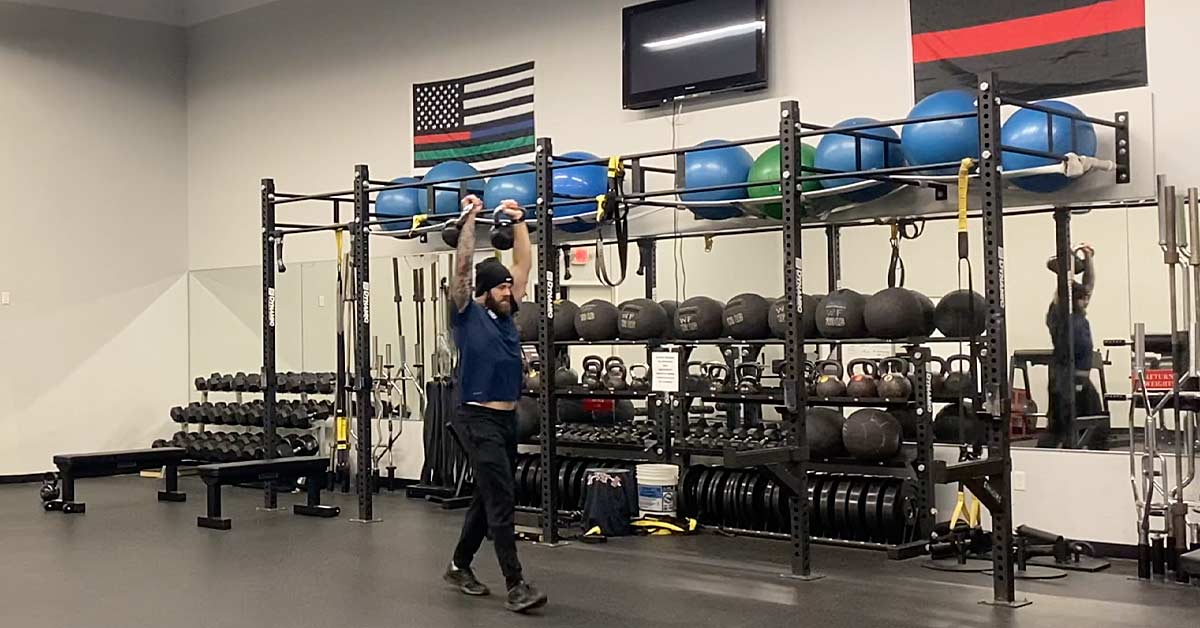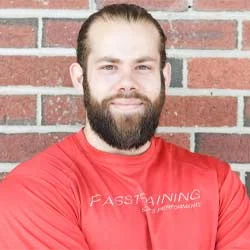Loaded carries are a low entry, high reward exercise that can develop strength in the trunk, grip, and upper body, along with being a great means to develop conditioning without punishing the joints.
When programming carries for the tactical population, they hold an even greater importance. Programming for athletes is far easier in comparison to those in the tactical field—athletes have specific seasons of play, and for the most part, you have a solid idea of what their sport requires.
For tactical athletes, every day is gameday, and it is impossible to program around their schedule and meet their specific required work tasks. Whether it be carrying ladders, dragging people, or even wrestling down a perpetrator, they have to be prepared for everything and anything. Yes, some things are fairly common or routine enough to be considered “day to day,” but you cannot replicate the additional potential stressors or dangers that are associated with their duties.
For tactical athletes, every day is gameday, and it is impossible to program around their schedule and meet their specific required work tasks. Share on XUsing carries as an exercise helps develop a strong base of general physical preparation (gpp), and even though many tactical athletes will carry things in the field—odd objects, people, their loads, etc.—I still focus and train carries as a gpp-based exercise, not overcomplicating the task.
My job is to aid tactical athletes in physical preparation to better handle the stressors of their jobs, not necessarily to replicate the field. If it looks similar to what may occur in the field and that helps initiate some buy in, then that is just a positive coincidence. Additionally, many agencies have their own work performance tests or physical abilities test, which will include specific tasks and carries.
How to Implement Carries
Carries are a versatile exercise that can be performed with several different pieces of training equipment, through various methods, and with different training adaptations in mind.
When progressing carries, there are four variables to consider:
- Load
- Distance
- Time
- Speed
Manipulating these four variables can help amplify a training session and can be used to develop and challenge athletes over time. Carries can be utilized in the warm-up, as the primary training exercise of the day, or as a conditioning option.
Carries can be utilized in the warm-up, as the primary training exercise of the day, or as a conditioning option. Share on XWarm-ups with carries are great to emphasize trunk and shoulder stability. Single arm carry options such as suitcase carries, kettlebell bottoms up carries, and others can create high amounts of muscular activation with little load required.
Video 1. Warmup Carries
Selecting a carry exercise as the primary exercise of the session is a beneficial option when working with the tactical population. Exercises such as heavy farmers’ carries or front-loaded options are brutal and will force total body tension. These movements can also be progressed easily by increasing the load over time, the distance covered, or even the speed of performance.
Programming carries as a means of conditioning is great for the tactical athlete. Maintaining the ability to carry or move loads can be paramount in the field. Mixing carries into conditioning protocols doesn’t have to be complicated either. Modify protocols such as AMRAPs or EMOMs by replacing exercises with carrying-based movements. A second option is to simply perform the carries for a set time, one minute plus for example. Simple, yet tough.
Carry Exercises
D Ball / Odd Objects
The D Ball or any odd object implantation are great tools to use for carries. Each offer their own unique difficulties when performing exercises and are more chaotic than the standard dumbbell or kettlebells. Some odd objects, for example, would be sandbags, kegs, and atlas stones.
Exercises that can be performed with these include:
Shoulder Carry
Carrying the implement on just one side of the body will force a need for the opposite side to brace and remain solid. This carry will typically allow the most weight to be used.
Offset Carry
Adding to the shoulder carry, you will carry an implement by the side in suitcase position. Later in the article, we’ll go into more depth on the offset carries and their benefits when using carries in a training program.
Bear Hug
Squeezing the implement tight to the body works to develop strength in the upper back, mid-section, and the grip. To successfully perform the movement, total body tension will be required.
Video 2. D Ball Carries
Kettlebell / Dumbbells
Outside of the odd object implementation, using kettlebells or dumbbells can be more than enough to train multiple carry options.
Outside of the odd object implementation, using kettlebells or dumbbells can be more than enough to train multiple carry options. Share on XSome exercises that can be performed with these include:
Front Rack Carry
The front rack carry can be performed with one or two kettlebells and requires proper posture throughout the movement. This carry is great to strengthen the entire back, shoulders, and trunk.
Video 3. Front Rack Carry
Overhead Carry
Similar to the front rack position, overhead carries can be performed with one or two implements and puts even more stress across the trunk, since the load is farther away from your center of mass, and are also great for shoulder health and stability.
Video 4. Overhead Carry
Offset Carries
Offset carries refer to loading just one side of the body differently from the other. This can be done by switching up the carrying position on one side of the body or just grabbing a heavier kettlebell in one hand in comparison to the other. Offset carries are great to add some variety and challenge in your programming.
Video 5. Offset Carries
Additional Movements
Once carries have been established in a program there are additional obstacles or series that can be utilized in training. Using carries in multidirectional movements (such as forward and backward shuttles, figure 8’s, or in conjunction with sled training) can all be viable answers.
Once carries have been established in a program there are additional obstacles or series that can be utilized in training. Share on XShuttles
Shuttles can be utilized to make small spaces feel much larger as well as offer a different proprioceptive perception, as walking backwards with a load can surprisingly be much more difficult than expected.
An example shuttle could be 20-10-5 yards: walk forward and back 20 yards, then 10 yards, and finish with a quick 5 yards forward and back. Different carry positions can be mixed in throughout the shuttles. There are really no limitations on what you may see fit for your population.
Video 6. Shuttles
Figure 8’s
From the archives of Joe Defranco’s special strength exercises. Figure 8 carries change up the direction by walking in a looping figure 8. Incorporating tight turns and quick redirections require more control and bracing throughout the carry.
Video 7. Figure 8
Carry and Drags
Using carries with sled movements is another underutilized way to challenge conditioning and broaden the base of physical preparation for tactical athletes. Whether it be forward, backward, or cross over drags, adding a single or double arm carry will change the exercise altogether.
Using carries with sled movements is another underutilized way to challenge conditioning and broaden the base of physical preparation for tactical athletes. Share on XWith beginners, I would recommend dragging the sled with the anchor around the waist before using a single strap as shown in the video.
Video 8. Sled & Carries
Wrap-Up
Carries are one of the best bang-for-your-buck exercises that can be used for tactical practitioners. Compared to other exercises, they require little skill acquisition and can be used several different ways in a training program.
Using the information throughout this article and exercise list can provide additional ways to utilize carries with tactical athletes. Progressing the exercises in a training program is key and will continue to keep them fresh and beneficial.






